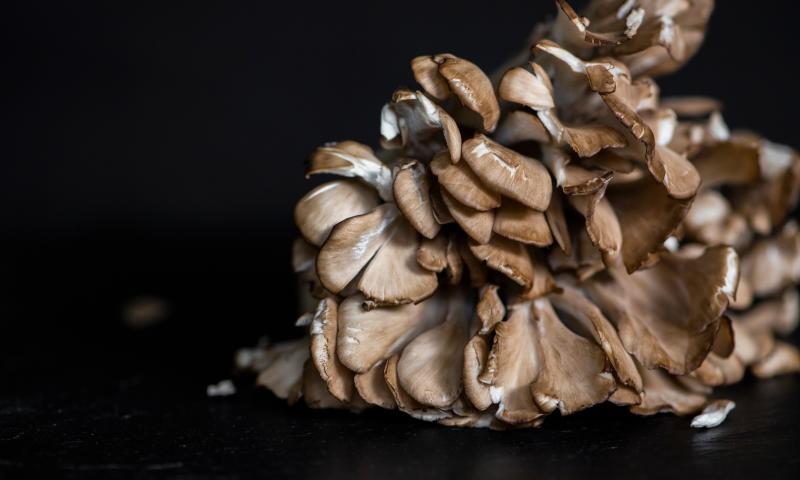 />
/>
Botanical Characteristics
Maitake, scientifically known as Grifola frondosa, is a large, edible mushroom that belongs to the Basidiomycete family. It is commonly referred to as "hen of the woods" due to its feathery, overlapping caps that resemble the plumage of a hen. The mushroom grows in a clustered formation at the base of trees, particularly oaks. Each individual frond of the Maitake mushroom has a smooth, velvety surface and is greyish-brown in color. The fronds fan out from a central, branching stem, creating a distinctive, ruffled appearance that can span up to several feet in width.
Chemical Composition
Maitake is rich in bioactive compounds, including polysaccharides like beta-glucans, which are known for their immune-supporting properties. It also contains amino acids, vitamins (such as B-complex and C), minerals (including potassium, calcium, and magnesium), and fibers. These constituents contribute to its nutritional and potential health-promoting properties.
Habitat
Grifola frondosa thrives in temperate forests of China, Japan, North America, and Europe. It predominantly grows at the base of hardwood trees, especially oaks, where it forms symbiotic relationships with the roots. The fungus favors moist, shaded areas, appearing in late summer to early autumn. Its ability to grow in these environments is attributed to its complex underground network of mycelia, which absorb nutrients from the soil and decaying wood.
Taste
Maitake has a distinctive, earthy flavor and a pleasant, chewy texture. It is often described as having a rich umami taste, making it a favored ingredient in culinary dishes. The mushroom's taste is not only enjoyable but also versatile, lending itself to a variety of cooking methods, including sautéing, grilling, and stewing.
Historical Facts
Historically, Maitake mushrooms have been valued in Asian cuisine and traditional medicine for centuries. In Japan, they were once used as a currency and were highly prized for their exquisite flavor and presumed health benefits. The name "Maitake" literally means "dancing mushroom" in Japanese, stemming from the legend that people would dance with joy upon finding it in the wild due to its rarity and value.
General Health Benefits
Maitake is reputed for its general health-enhancing properties. Its nutritional profile, rich in vitamins, minerals, and antioxidants, supports overall well-being. The polysaccharides, particularly beta-glucans, are known for supporting immune system function. Additionally, Maitake has been acknowledged for its potential to support healthy blood sugar levels and promote cardiovascular health.
Indications for Use
As a dietary supplement, Maitake is used to support general health and well-being. It is often consumed in various forms, including fresh or dried mushrooms, powders, and extracts. Due to its nutrient-rich composition, it is popular among individuals seeking to enhance their diet with natural, plant-based ingredients.
Conclusion
In conclusion, Maitake (Grifola frondosa) is a mushroom with rich botanical characteristics, nutritional value, and historical significance. Its habitat spans across continents, thriving in temperate forest ecosystems. Known for its distinctive taste and potential health benefits, Maitake continues to be a subject of interest in nutritional and botanical research.
